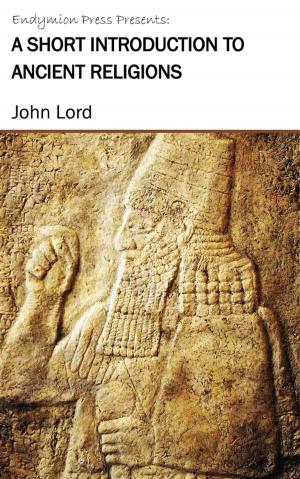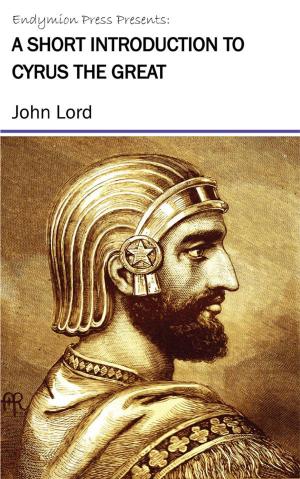| Author: | James Samuelson | ISBN: | 9781531294717 |
| Publisher: | Endymion Press | Publication: | August 31, 2016 |
| Imprint: | Language: | English |
| Author: | James Samuelson |
| ISBN: | 9781531294717 |
| Publisher: | Endymion Press |
| Publication: | August 31, 2016 |
| Imprint: | |
| Language: | English |
Although the earliest authentic records of Romania or, more correctly speaking, of Dacia, the Roman province which embraced Romania, Transylvania, and some adjoining territories of to-day, do not reach further back than about the century immediately preceding the Christian era, a good deal of information is to be gathered from the writings of Herodotus, Dion Cassius, and other early historians regarding the Getæ, the race from whom the Dacians sprang. The Getæ were in all probability a branch of the Thracians, who were amongst the earliest immigrants from the East; and for some time before they appeared in Dacia, which was situated on the northern side of the Danube (or Ister, as it was called by the Romans), they had settled between the south bank of that river and the Balkans (Mount Hæmus of the Romans). About the fourth century b.c., however, the Getæ had crossed the river, either driven north by an inimical neighbouring tribe, the Triballi, or in consequence of the growth of the nation itself. When they were first encountered by the Greeks, they occupied the eastern part of Dacia, reaching probably to one portion of the Black Sea; and some account of them is given by Ovid, who was exiled to their vicinity, but little is known of them until they came in contact with the Roman armies. The Getæ have little direct interest for us, but as we find associated with them the names of Philip of Macedon, Alexander the Great, and Lysimachus, a few words concerning their connection with those heroes may not be out of place, and will at least serve to fix a period in the history of the people. Whilst they were still seated on the southern side of the Danube, they are said to have been the allies of Philip in his expedition against the Scythians, and in his contest with the Triballi; but Alexander the Great found them on the northern bank of the river when he undertook the conquest of the Thracian tribes prior to his expedition into Persia. He is said to have crossed the Danube at a place not clearly defined (b.c. 335), and to have defeated about 10,000 foot and 4,000 horsemen. These took refuge with their families in a wooden town, from which they were also dislodged, and fleeing to the steppes they escaped from the victorious Greeks. Now it is that we find the name Getæ changed into that of Dacians, and in the events which followed during the reign of Lysimachus they are known by both designations. After the death of Alexander the Great, Lysimachus inherited Thrace, and subsequently acquired Macedonia and Asia Minor; but in order to secure the first-named territory he found it necessary to cope with barbarian tribes, who formed a coalition against him. These he defeated; but inasmuch as the Getæ or Dacians, under their king (hellenised) Dromichætes, had co-operated with the barbarians, he undertook an expedition into their country north of the Danube shortly afterwards. Penetrating to their barren plains, he sustained a defeat, and was captured along with his whole army...
Although the earliest authentic records of Romania or, more correctly speaking, of Dacia, the Roman province which embraced Romania, Transylvania, and some adjoining territories of to-day, do not reach further back than about the century immediately preceding the Christian era, a good deal of information is to be gathered from the writings of Herodotus, Dion Cassius, and other early historians regarding the Getæ, the race from whom the Dacians sprang. The Getæ were in all probability a branch of the Thracians, who were amongst the earliest immigrants from the East; and for some time before they appeared in Dacia, which was situated on the northern side of the Danube (or Ister, as it was called by the Romans), they had settled between the south bank of that river and the Balkans (Mount Hæmus of the Romans). About the fourth century b.c., however, the Getæ had crossed the river, either driven north by an inimical neighbouring tribe, the Triballi, or in consequence of the growth of the nation itself. When they were first encountered by the Greeks, they occupied the eastern part of Dacia, reaching probably to one portion of the Black Sea; and some account of them is given by Ovid, who was exiled to their vicinity, but little is known of them until they came in contact with the Roman armies. The Getæ have little direct interest for us, but as we find associated with them the names of Philip of Macedon, Alexander the Great, and Lysimachus, a few words concerning their connection with those heroes may not be out of place, and will at least serve to fix a period in the history of the people. Whilst they were still seated on the southern side of the Danube, they are said to have been the allies of Philip in his expedition against the Scythians, and in his contest with the Triballi; but Alexander the Great found them on the northern bank of the river when he undertook the conquest of the Thracian tribes prior to his expedition into Persia. He is said to have crossed the Danube at a place not clearly defined (b.c. 335), and to have defeated about 10,000 foot and 4,000 horsemen. These took refuge with their families in a wooden town, from which they were also dislodged, and fleeing to the steppes they escaped from the victorious Greeks. Now it is that we find the name Getæ changed into that of Dacians, and in the events which followed during the reign of Lysimachus they are known by both designations. After the death of Alexander the Great, Lysimachus inherited Thrace, and subsequently acquired Macedonia and Asia Minor; but in order to secure the first-named territory he found it necessary to cope with barbarian tribes, who formed a coalition against him. These he defeated; but inasmuch as the Getæ or Dacians, under their king (hellenised) Dromichætes, had co-operated with the barbarians, he undertook an expedition into their country north of the Danube shortly afterwards. Penetrating to their barren plains, he sustained a defeat, and was captured along with his whole army...















